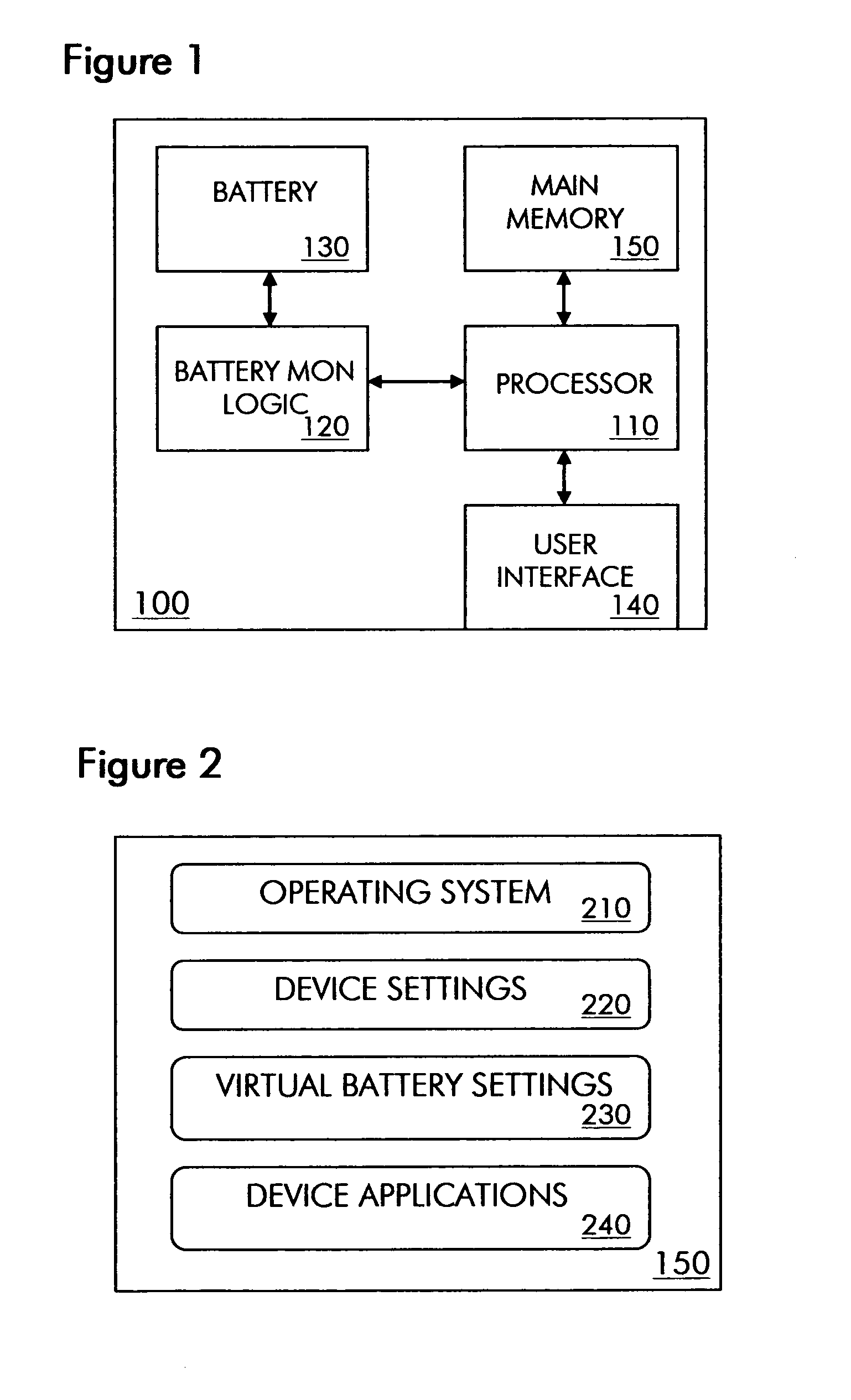Virtual batteries for wireless communication device
a wireless communication device and battery technology, applied in transmission monitoring, instruments, high-level techniques, etc., can solve the problems of inability to use core communication applications such as telephone calling and text messaging, user inadvertently exhausting the battery of the wireless communication device, and failure to achieve the effect of efficient allocation of power among competing users
- Summary
- Abstract
- Description
- Claims
- Application Information
AI Technical Summary
Benefits of technology
Problems solved by technology
Method used
Image
Examples
Embodiment Construction
[0014]In FIG. 1, a wireless communication device 100 is shown in one embodiment of the invention. Device 100 may be, for example, a mobile phone, a personal data assistant or a pocket PC. Device 100 includes a processor 110 communicatively coupled between battery monitoring logic 120, user interface 140 and main memory 150. Processor 110 is a general purpose processor adapted to execute instructions of software stored in main memory 150 and interact with elements 120 and 140 to provide applications and functions supported by device 100. Device applications may include core communication applications such as sending and receiving telephone calls and text messages as well as collateral applications such as digital photography, music and video recording and playback and video gaming. Device functions may include user preferences such as display backlight. Main memory 150 may be a flash memory. Naturally, device 100 includes other elements such as a wireless interface (not shown) that i...
PUM
 Login to View More
Login to View More Abstract
Description
Claims
Application Information
 Login to View More
Login to View More - R&D
- Intellectual Property
- Life Sciences
- Materials
- Tech Scout
- Unparalleled Data Quality
- Higher Quality Content
- 60% Fewer Hallucinations
Browse by: Latest US Patents, China's latest patents, Technical Efficacy Thesaurus, Application Domain, Technology Topic, Popular Technical Reports.
© 2025 PatSnap. All rights reserved.Legal|Privacy policy|Modern Slavery Act Transparency Statement|Sitemap|About US| Contact US: help@patsnap.com



